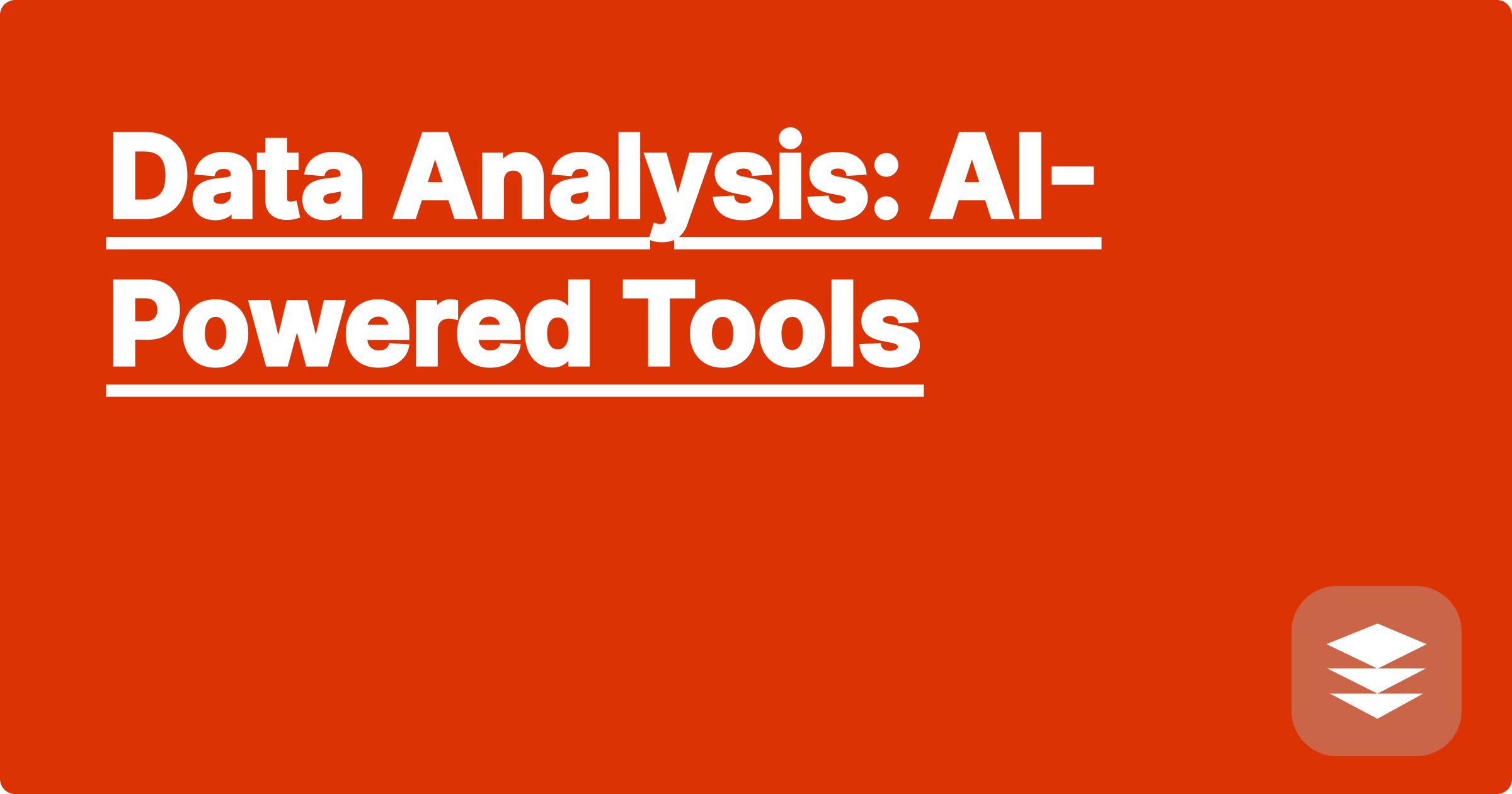
The sheer volume of data generated in modern STEM fields presents a significant challenge for students and researchers. Sifting through this data, identifying meaningful patterns, and extracting actionable insights can be a daunting task, often requiring extensive time and specialized expertise. Artificial intelligence offers a powerful set of tools to address this challenge, providing opportunities to automate analysis, uncover hidden relationships, and accelerate the pace of discovery. AI-powered tools can transform how STEM professionals approach data analysis, offering new possibilities for innovation and research.
This shift towards AI-driven data analysis is not just a trend; it's a fundamental change in how scientific research is conducted. For STEM students and researchers, understanding and leveraging these tools is crucial for staying competitive and contributing meaningfully to their fields. Mastering these technologies will not only enhance their analytical capabilities but also equip them with essential skills for the future of STEM careers. This blog post will explore how AI-powered tools like ChatGPT, Claude, and Wolfram Alpha can be integrated into data analysis workflows, providing practical examples and strategies for academic success.
Data analysis in STEM fields often involves complex datasets with numerous variables and intricate relationships. Traditional statistical methods can be time-consuming and may not always be adequate for uncovering complex patterns or non-linear relationships. Furthermore, the increasing specialization within STEM disciplines requires researchers to grapple with domain-specific data formats and analytical techniques. This can create a barrier to entry for students and early-career researchers who may lack the extensive experience needed to navigate these complexities. The challenge lies not only in processing the data but also in interpreting the results and drawing meaningful conclusions that can advance scientific understanding. This requires a combination of statistical expertise, domain knowledge, and computational skills, which can be challenging to acquire and maintain.
AI-powered tools offer a transformative approach to data analysis by automating complex tasks and providing intelligent insights. Tools like ChatGPT and Claude can be used to generate code for data cleaning, preprocessing, and visualization. They can also assist in exploring different statistical models and interpreting results. Wolfram Alpha, with its powerful computational engine and vast knowledge base, can be leveraged for symbolic computations, data analysis, and knowledge discovery. By integrating these tools into their workflows, STEM researchers can significantly reduce the time spent on tedious tasks, allowing them to focus on higher-level analysis and interpretation. These AI assistants can also act as intelligent collaborators, providing suggestions, explanations, and alternative approaches that might not be immediately apparent to a human researcher.
Begin by clearly defining the research question and identifying the relevant datasets. Then, use ChatGPT or Claude to generate code for importing and cleaning the data, addressing any missing values or inconsistencies. Next, explore the data using descriptive statistics and visualizations, leveraging the capabilities of tools like Wolfram Alpha to generate interactive plots and perform symbolic computations. Once the data is prepared, use ChatGPT or Claude to suggest appropriate statistical models based on the research question and data characteristics. Implement these models using the generated code and evaluate their performance. Finally, interpret the results in the context of the research question, using AI tools to help explain complex relationships and generate insightful reports.
Consider a researcher studying the relationship between gene expression and disease progression. They can use ChatGPT to generate Python code for importing gene expression data from a CSV file and cleaning the data. Wolfram Alpha can then be used to perform statistical analysis, such as calculating correlation coefficients or performing a t-test to compare gene expression levels between different groups. Furthermore, ChatGPT can help generate code for visualizing the results, creating scatter plots or heatmaps to illustrate the relationships between genes and disease progression. Another example involves a physicist analyzing data from a particle accelerator experiment. They can use Wolfram Alpha to perform complex calculations, such as evaluating integrals or solving differential equations related to particle trajectories. ChatGPT can then be used to generate code for simulating the experiment and visualizing the results, allowing the physicist to explore different scenarios and test hypotheses.
To effectively leverage AI in STEM education and research, it's essential to develop a strong understanding of the underlying principles of data analysis and statistical modeling. AI tools should be viewed as assistants, not replacements, for human expertise. Critically evaluate the output generated by these tools and ensure it aligns with established scientific principles. Furthermore, stay updated on the latest advancements in AI and data analysis techniques to maximize the benefits of these tools. Developing proficiency in programming languages like Python or R will enhance your ability to interact with these tools and customize their functionality. Finally, embrace the collaborative potential of AI by using it to facilitate discussions and share insights with colleagues and peers.
In conclusion, AI-powered tools are transforming the landscape of data analysis in STEM fields. By integrating these tools into their workflows, students and researchers can significantly enhance their analytical capabilities and accelerate the pace of discovery. Embracing these technologies is not just about adopting new tools; it's about developing a new mindset – one that embraces collaboration between humans and AI to unlock the full potential of data and advance scientific knowledge. Start exploring these tools today and discover how they can empower you in your STEM journey.
STEM Scholarships: Find Your Perfect Fit
Ace STEM Homework: AI-Powered Help
AI in Labs: Boost Your Research
STEM Exam Prep: AI-Driven Success
Engineering AI: Design Smarter
Solve STEM Problems: AI Assist
Data Analysis: AI-Powered Tools